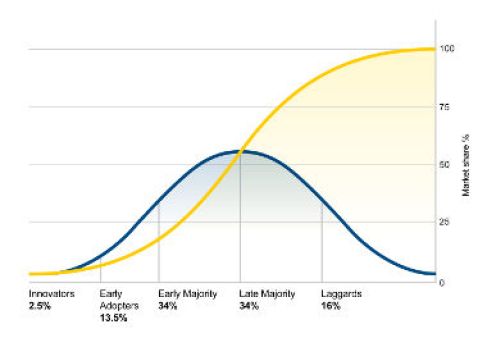Editor’s note: For posterity’s sake, I’m reposting some content that we created during our time at Oracle. These statements and views are those of the author and do not reflect those of Oracle’s current user experience organization.
Emphasis on emerging technology shapes user experience strategy
The AppsLab, the OAUX emerging technologies team, has a passion for investigating how emerging interactions and technologies can benefit Oracle users.
While this team has existed for many years, Oracle recently increased its investment in forward-looking innovation. We look exclusively at new and emerging technologies, such as wearables and Internet of Things (IoT), to understand how they work and how they might influence the user experience of enterprise software someday.
By dedicating a team to emerging technologies, we can accelerate our rate of innovation in the Oracle user experience and drive the evolution of Oracle Cloud Applications forward.
Innovation plays an important role on our team. Jeremy Ashley, Group Vice President of the Oracle Applications User Experience (OAUX) group, describes innovation as a process of constant refinement.
“Innovation, in its purest form, is to make something better,” he said. “It takes work – observation, understanding, the ability to see what is important about something.” Innovation comes from two sources, he said: new technology or materials in which we can see opportunities, and the ability to research and identify a pattern or trend that gives us insight, which we then leverage to design and build something interesting and useful.
If you’re wondering why Oracle invests heavily in such forward-looking work, think about the tablet. Remember back to when the original iPad was released in 2010. Lots of smart people scoffed at “the big iPod” with the humorous name.
Fast-forward to the present, and think about the devices you use every day. Odds are there’s a tablet in your life, and when tablets came out, we did the research, built some representative demos, and showed those demos to users.
We collected feedback, and when the time was right, we already had code and research to show. We were ready to add this new innovation into the Oracle user experience, even before its use became widespread.

We study new technology and materials and look for opportunities for innovation in the user experience.
The spread of innovation
Consider the diffusion of innovations theory offered by communication scholar Everett Rogers in the 1960s.
Rogers models the spread of an innovation through any given populace over time, juxtaposed with the innovation’s market share. He breaks the populace into five groups: innovators, early adopters, early majority, late majority, and laggards.
Think about the innovations of the past 20 years. We?ve seen the meteoric rise of technologies we now use every day, like the Internet, ecommerce, mobile phones, smartphones, and social networks. For every technology, there have been groups of early adopters and laggards and those who are in between.
As these technologies take root, the time it takes for each new technology to gain mass adoption continues to compress, causing innovations to spread much more quickly.
For example, it took the better part of a decade for Internet access to become a ubiquitous utility for every business. Fast-forward a bit and think about the same timespan for smartphones as a must-have for work.

How long did that take, maybe five years? What about the next new tool, technology or device that allows users to be more productive? Whatever it is, it’s already in the workplace, making jobs easier and making people more efficient.
People bring their expectations of technology to the workplace. Sales representatives think their applications should be easy, like Instagram. Employees working in finance think General Ledger needs an iPad app with animated reports. Human resources workers want an employee directory for their smartwatches. The core message we hear from users again and again is that they want – even expect – their work experiences to be on par with their consumer experiences.
This is where the emerging technologies team fits into the user experience work. We investigate new technologies because someday soon, our users will want to use them at work.

Simply put, innovations make our experiences better. So naturally, users want better experiences everywhere – at work, at home, in the car, on airplanes, in space, underwater – everywhere.
Where does Oracle invest?
Successful adoption of new technology relies heavily on:
- Timing
- Use cases that trigger user empathy or pain points
- Neutral and trusted advocates
Innovators and early adopters are frequently relied on to identify emerging technologies and evaluate their impact. They advise decision-makers and are viewed as experts.
We focus on what innovators and early adopters are also investigating, which allows us to find common ground and convert them into advocates. This helps drive adoption and seeds demand in their spheres of influence.

We’ve realized innovations that have spread to the early adopter group will produce the most bang for our buck. These are projects that aren’t too far-fetched but aren’t yet completely tactical and incremental enhancements.
That’s not to say we don’t do mad-scientist explorations, a.k.a. “moonshots.” We do those, too, just not very many. Typically, moonshot innovations won’t affect users for years, but when they do, we’ll be prepared and informed. For example, we’ve been messing around with technologies like head-mounted displays, augmented reality, gestural interfaces, and drones.
We also do tactical projects, or incremental improvements that users know they want right now. These might include improvements to how interview evaluations are completed or geo-fencing data to meet security requirements.
Learn more
Now that you know what we do and why, here’s how you can learn more about how we operate.
Read about our methodologies:
